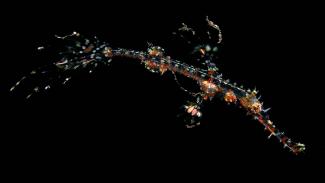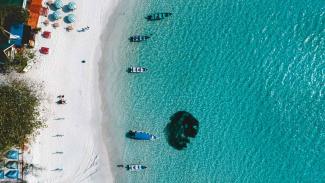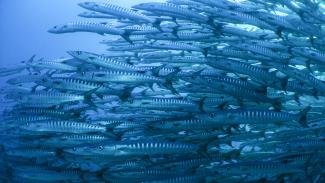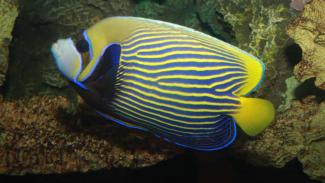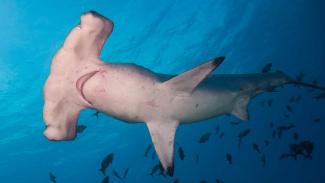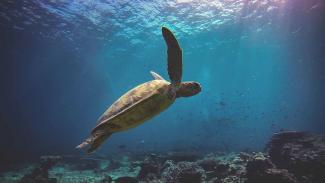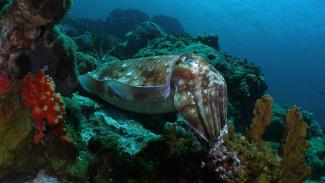Your essential guide to the best diving in Malaysia
From the wonderful marine life of Sipadan and Mabul Island in Borneo to the dive sites of Peninsular Malaysia, scuba diving in Malaysia has something for everyone.
Geographically, the country is split into two separate regions. Peninsular Malaysia lies on mainland between Thailand and Singapore, while the states Sarawak and Sabah are on the island Borneo.
Peninsular Malaysia is the more developed, offering very good dive sites for less experienced divers such as the Perhentian Islands, Tioman & Redang. On Borneo, Sabah has some of the best dive sites in the world to explore.
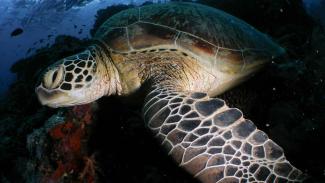
Tara North
Highlights
What are the best dive sites in Malaysia?
There is a superb variety of scuba diving sites to enjoy in Malaysia, from fringing reefs to plunging wall dives, and even muck diving for critter lovers. Good shore diving is also possible on some islands, such as the Perhentian Islands, Mabul Island and Kapalai.
Sipadan and Mabul Islands
Sipadan Island is Malaysia's most famous scuba diving destination. This little island is not only Malaysia’s best and most well known dive spot, it is arguably one of the best places to dive in the world.
Plunging walls and coral slopes provide a backdrop to incredible marine life. Large schools of Barracuda, Jacks and Batfish are seen here, while Blacktip Reef Sharks patrol the waters. Possibly the most famous Sipadan residents are the Green Turtles. The island is a nesting site, and divers ae sure to be enthralled by many Turtle sightings on almost every dive!
There is no accommodation on Sipadan Island and permits to the island are limited to just 120 divers per day. Divers will need to stay on Mabul Island, Kapalai or Semporna, with longer stays recommended to ensure good opportunities to dive at Sipadan. Mabul and Kapalai offer excellent diving in themselves, especially for smaller marine life.
Other top dive spots in Malaysian Borneo
Sipadan is not the only great diving destination in Sabah. There is also excellent diving from Layang Layang, Kota Kinabalu and Lankayan.
Layang Layang is a remote atoll to the north of Borneo with a solitary dive resort. The atoll is surrounded by very deep water, resulting in spectacular coral and thrilling marine life sightings. Hammerhead Sharks frequent the area in April and May each year.
Little Lankayan Island is another great spot for divers, especially lovers of smaller marine life. Whale Sharks are also known to pass through this region in April and May each year.
Just off the coast from Kota Kinabalu is the Tunku Abdul Rahman Marine Park, an excellent destination for less experienced divers or those looking to learn to dive.
Perhentian Islands
Possibly the most popular scuba diving destination on Peninsular Malaysia is the Perhentian Islands towards the northern end of the east coast. These charming islands have enjoyable reef dives and wreck dives, and are a super choice to learn to dive or advance your diving qualifications.
Other top dive sites in Peninsula Malaysia
Other popular destinations for scuba diving on Peninsular Malaysia include Redang, Tioman and Langkawi. Both Redang and Tioman are beautiful islands on the east coast of Peninsular Malaysia known for extensive coral gardens, varied marine life, and good chances to swim or dive with Turtles. There are also other islands on the east coast with good diving such as Lang Tengah and Tengoll. Langkawi Island, on the west coast of Malaysia near the border with Thailand, is another good spot for those looking to get their diving certification.
Keen to find out more? Skip on through to our detailed review of all of Malaysia's best diving destinations.
What marine life can you see in Malaysia?
Malaysia has an alluring range of marine life for eager divers and snorkellers to enjoy.
Borneo has plenty of big-fish action, especially at Sipadan, which is home to huge schools of Barracuda, numerous White-tip Reef Sharks, Green Turtles, Bumphead Parrotfish and even Hammerhead Sharks if you are lucky. If Sharks are your thing, in April and May large numbers of schooling Hammerheads gather around the Layang Layang atoll out in the South China Sea.
For macro photography enthusiasts and those who love the weird and wonderful, there is also a host of fascinating critters to disover, including Frogfish, Mandarinfish, Ornate Ghost Pipefish & Nudibrach’s. Mabul Island, Kapalai and Lankayan offer the best diving opportunities for smaller marine life in Malaysia.
Most destinations on Peninsular Malaysia, while not offering the quite diversity of the dive spots in Borneo, are home to Turtles, Reef Sharks, Moray Eels, Cuttlefish and plenty of other colourful reef inhabitants. Whalesharks can make occasional appearances at some sites but are far from regular visitors.
Ease of travel
Malaysia has an international airport in Kuala Lumpur, the capital. From here, domestic routes take you close to many of the best dive areas such as Tawau (for Sipadan and Mabul), Kota Kinabalu or Sandakan.
For the independent minded, buses on Peninsular Malaysia are also comfortable, frequent and cheap and there are normally regular ferry connections to the islands during high season. Most resorts and dive centres can advise on or privde transfers.
Sabah is a little more difficult to travel around, with a limited road network meaning most travel is either by air or by sea, but the most popular diving areas are well serviced. Most dive resorts in the Sipadan area provide transfer services from Tawau, the closest airport. Layang Layang, out in the middle of the South China Sea is only accessible by seaplane from Kota Kinabalu.
People
Malaysians, especially on Peninsular Malaysia, are a diverse group with influences from China, India & local Malay culture. They are friendly, welcoming & hospitable. The country is predominantly Muslim, but with some Christians, especially in Sabah & Sarawak. Most of the population lives on Peninsular Malaysia.
Safey
Malaysia is a safe country, with limited crime, good transport links and political stability. In the past, due to its remote location, the islands off Sabah have had some problems with bandits, however the Malaysian authorities have worked extremely hard to ensure that these areas are now safe for tourists to visit.
What is the best time to scuba dive in Malaysia?
As a general rule, the best diving season in most of Malaysia is from March through to October. Sipadan and the other dive sites around Sabah in Borneo can be dived year-round, however March through to October bring the best conditions and most prolific marine life sightings. Layang Layang can only be visited between March and August each year.
The dive sites on the eastern coast of Peninsular Malaysia are best from April to September, with some islands largely closing down outside these months.
The only diving spot on the west coast of Peninsular Malaysia is Langkawi, which is best dived from November through to April.


Kris Mikael Krister
Where to see Turtles in Malaysia
Turtles can be seen in many places in Malaysia. Sipadan Island is the best place, with the most famous and prolific sightings. Hundreds of Turtles are found at this remote atoll in Borneo to nest and breed. Sipadan Island is regarded as some of the best diving in the world. Diving Sipadan is expensive however and permits are limited.
Both Green and Hawksbill Turtles can also be seen on sites around many other diving locations. On Sabah, there are excellent Turtle sightings around Lankayan Island (also known as Turtle Island), which acts as another nesting site.
Turtles can also be seen at most other diving spots in Malaysia, including Tunku Abdul Rahman National Park. Perhentian Islands, Redang, and Tioman Island.


Laya Clode
Where is the best snorkelling in Malaysia?
Malaysia has some wonderful opportunities for snorkellers, particularly on Peninsular Malaysia. Here, shallow fringing reefs ensure a wealth of wonderful corals and interesting marine life for avid snorkellers to enjoy.
In Borneo, the most accessible destination for snorkelling is the Tunku Abdul Rahman Marine Park. Those looking for more adventure could consider Lankayan or Mataking Island. The reefs at Sipadan Island come to within a few metres of the surface, providing plentiful snorkelling opportunities. However, permits limit visitor numbers and the neighbouring islands of Mabul and Kapalai tend to be a little more famous for smaller marine life, which tends to favour excellent diving rather than snorkelling experiences.

Mikaku


